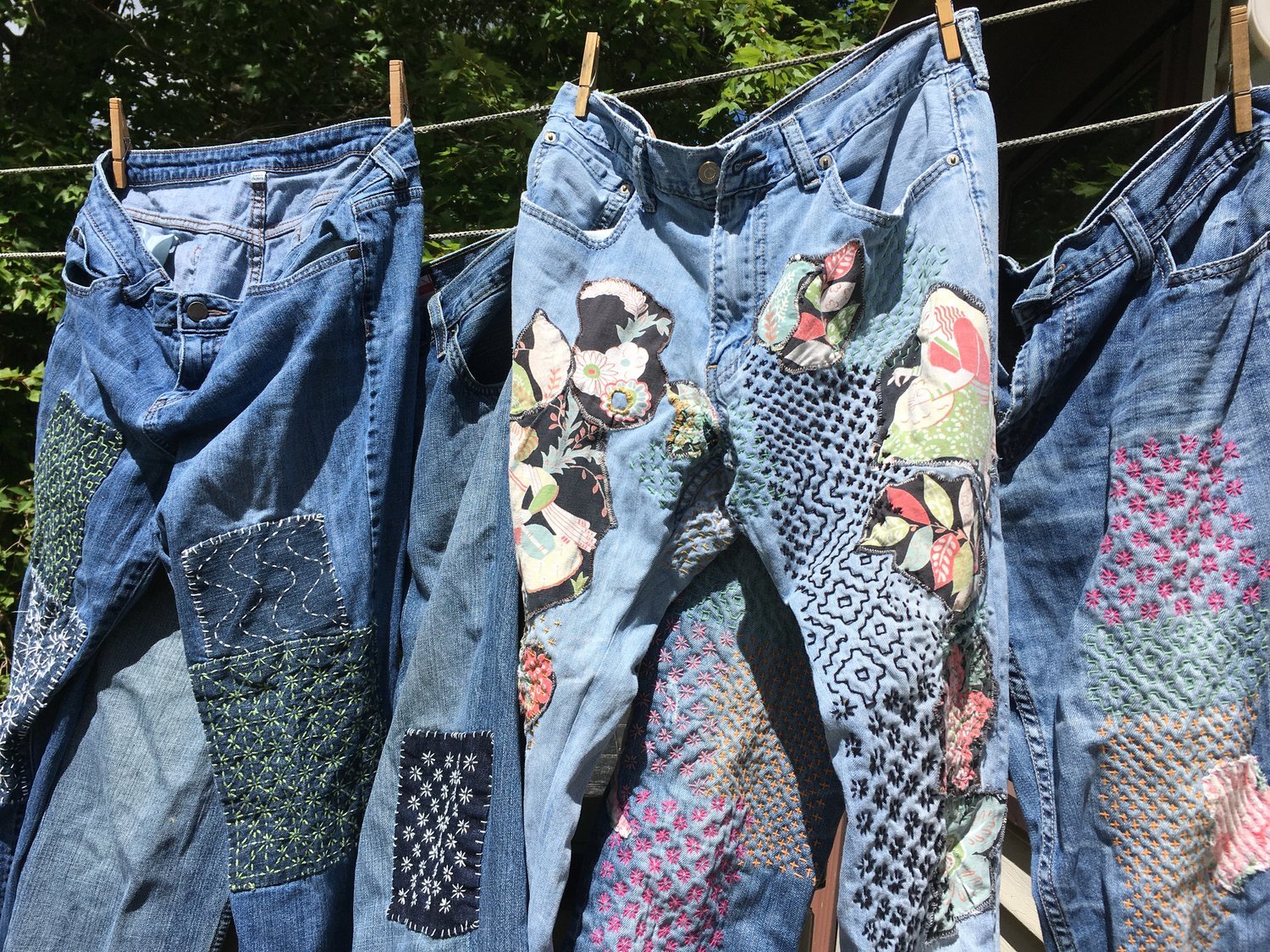The Art of Mending: Extending the Life of Your Clothes with Slow Stitching and Darning
In our fast-paced world, it's easy to discard worn or damaged clothing in favor of something new. However, mending our clothes is a powerful act of sustainability, creativity, and self-sufficiency. By learning techniques like slow stitching and darning, we can breathe new life into our beloved garments, reduce waste, and embrace the principles of slow fashion. Let’s explore how mending can transform your wardrobe and contribute to a more sustainable lifestyle. I will talk more about my thoughts on fast fashion versus slow fashion and what I am choosing to do with my wardrobe in a later post.
The Philosophy of Mending
Mending is not just a practical skill; it’s a mindset that challenges the throwaway culture of fast fashion. Here’s why mending is so important:
Sustainability: Repairing clothes reduces textile waste and the environmental impact of producing new garments. 80% of all Clothing is landfilled. 80%!! That blows my mind.
Economy: Mending saves money by extending the life of your clothes, making your wardrobe investments go further.
Creativity: Mending can be an artistic expression, allowing you to customize and personalize your clothing.
Connection: Repairing your clothes helps you develop a deeper connection to your possessions, encouraging mindful consumption.
Artsy Slow Stitching by Rachel Barclay
Slow Stitching: A Mindful Approach
Slow stitching is a meditative and intentional practice that emphasizes the process of mending as much as the outcome. It’s about taking the time to repair and embellish your clothes with care. Here are some key aspects of slow stitching: Have you seen the amazing works from @rachelharrietteb, I am so tickled to get to meet Rachel at Sacred Makers next week.
Mindfulness: Slow stitching encourages you to focus on the task at hand, fostering a sense of calm and mindfulness. This was one of my biggest joy-filled reasons for picking up slow stitching.
Artistry: This technique allows for creative expression, turning simple repairs into beautiful, decorative elements. There are so many amazing options and intricate designs. @Dropcloth is a great resource for samplers to learn a variety of stitches.
Personalization: Through slow stitching, you can add unique patterns, textures, and colors to your clothes, making them one-of-a-kind.
Sweater repaired by Celia Pym
Darning: Repairing Holes and Worn Areas
Have you heard of darning? I stumbled upon the amazing darning work of Celia Pym’s and my heavens!! What a honey hole of goodness. Darning is a traditional technique used to repair holes or worn areas in fabric, especially knitwear. It involves weaving new threads into the damaged area to create a durable and often nearly invisible patch. Here’s how to get started with darning:
Identify the Area: Find the hole or worn spot that needs repair. I recently did a mend on a cashmere sweater.
Prepare Your Tools: You’ll need a needle, thread or yarn that matches the fabric you can be like me and go high contrast, and a darning mushroom …. I used my massage ball LOL! (or a similar object to provide tension).
Create a Foundation: Start by sewing running stitches around the perimeter of the hole to stabilize the fabric.
Weave the Threads: Thread your needle and weave horizontally across the hole, anchoring your stitches in the stable fabric around the hole. Then, weave vertically, interlacing with the horizontal threads to create a woven patch. I found a quick demo video on YT shorts HERE
Creative Mending Ideas
Mending doesn’t have to be purely functional; it can also be decorative. Here are some creative mending ideas to inspire you:
Visible Mending: Embrace the repair as a design feature by using contrasting thread or decorative stitches. Visible mending can turn a tear into a beautiful, eye-catching detail.
Patchwork: Use fabric scraps to patch holes, creating a colorful, patchwork effect. This technique is particularly charming on jeans, jackets, and bags.
Embroidery: Add embroidered designs around the mended area to enhance the garment’s aesthetic. Floral patterns, geometric shapes, or custom motifs can all add a unique touch.
Conclusion: Mending as a Lifestyle
Mending worn clothes is more than just a way to save money; it’s a lifestyle choice that promotes sustainability, creativity, and mindfulness. By embracing techniques like slow stitching and darning, we can extend the life of our garments, reduce our environmental footprint, and cultivate a deeper appreciation for our possessions. So next time you find a hole or worn spot in your favorite piece of clothing, consider picking up a needle and thread. You might just find that mending is not only practical but also profoundly rewarding.
I would love to know if you have any tips or tricks and books you recommend.



